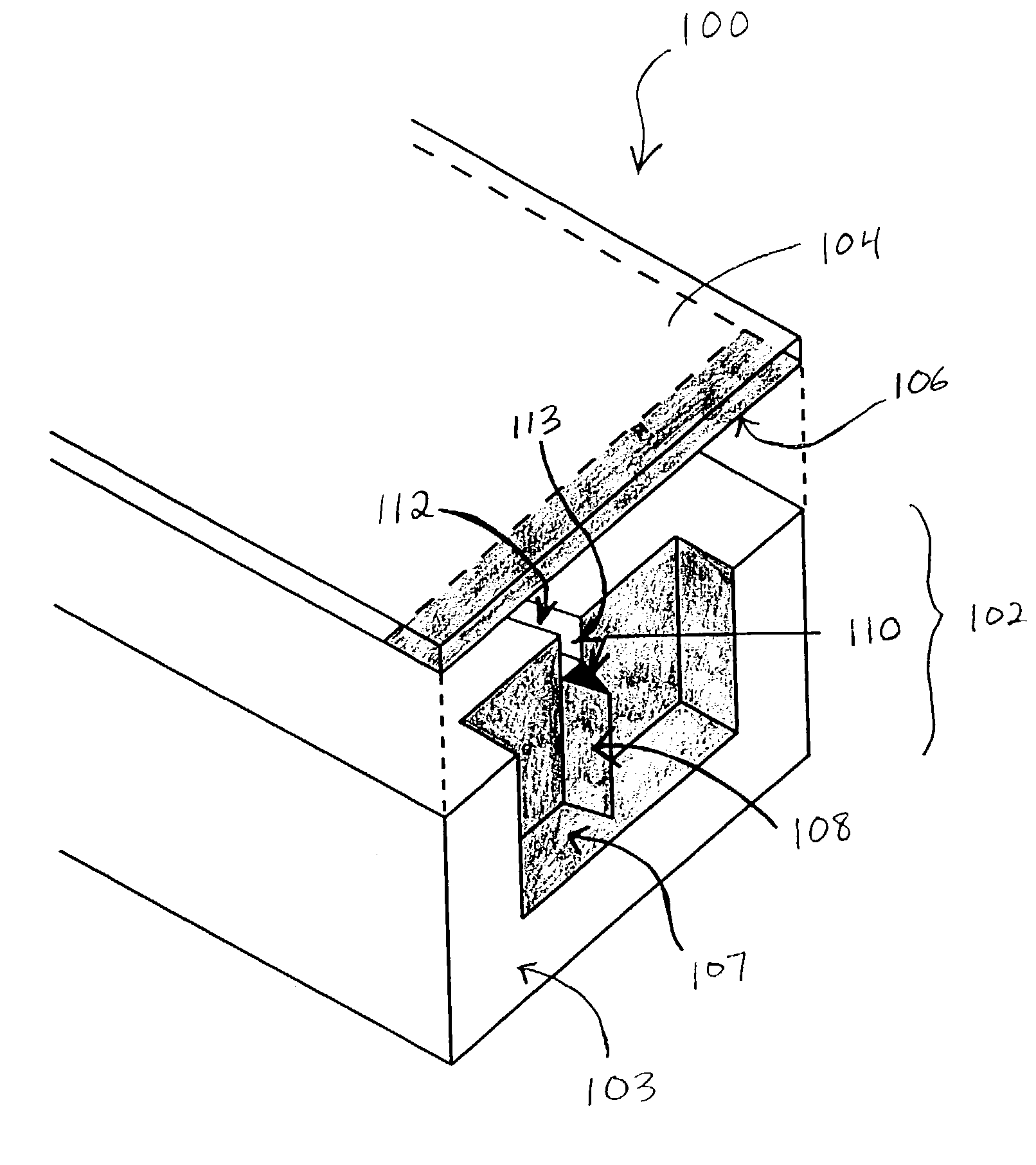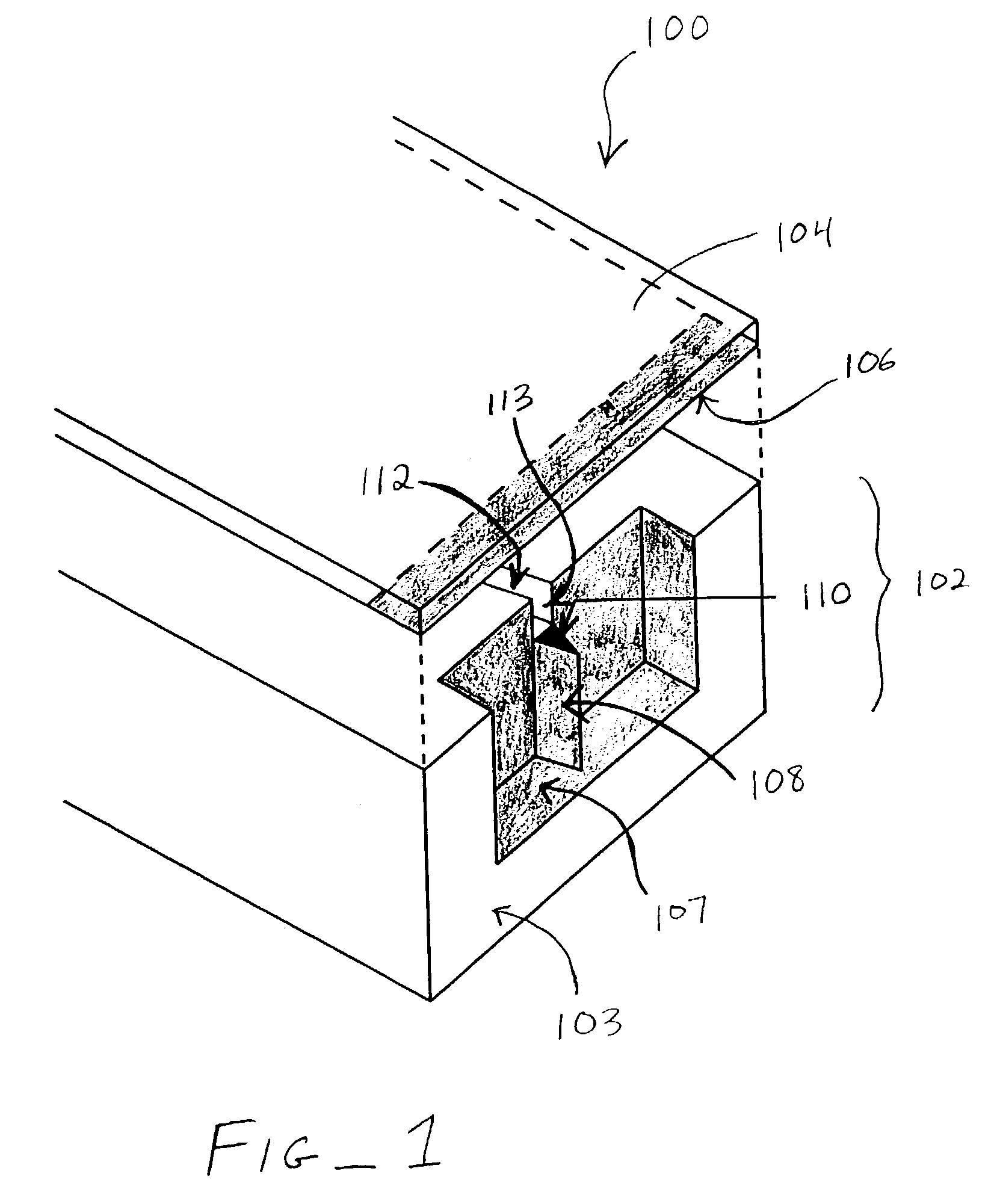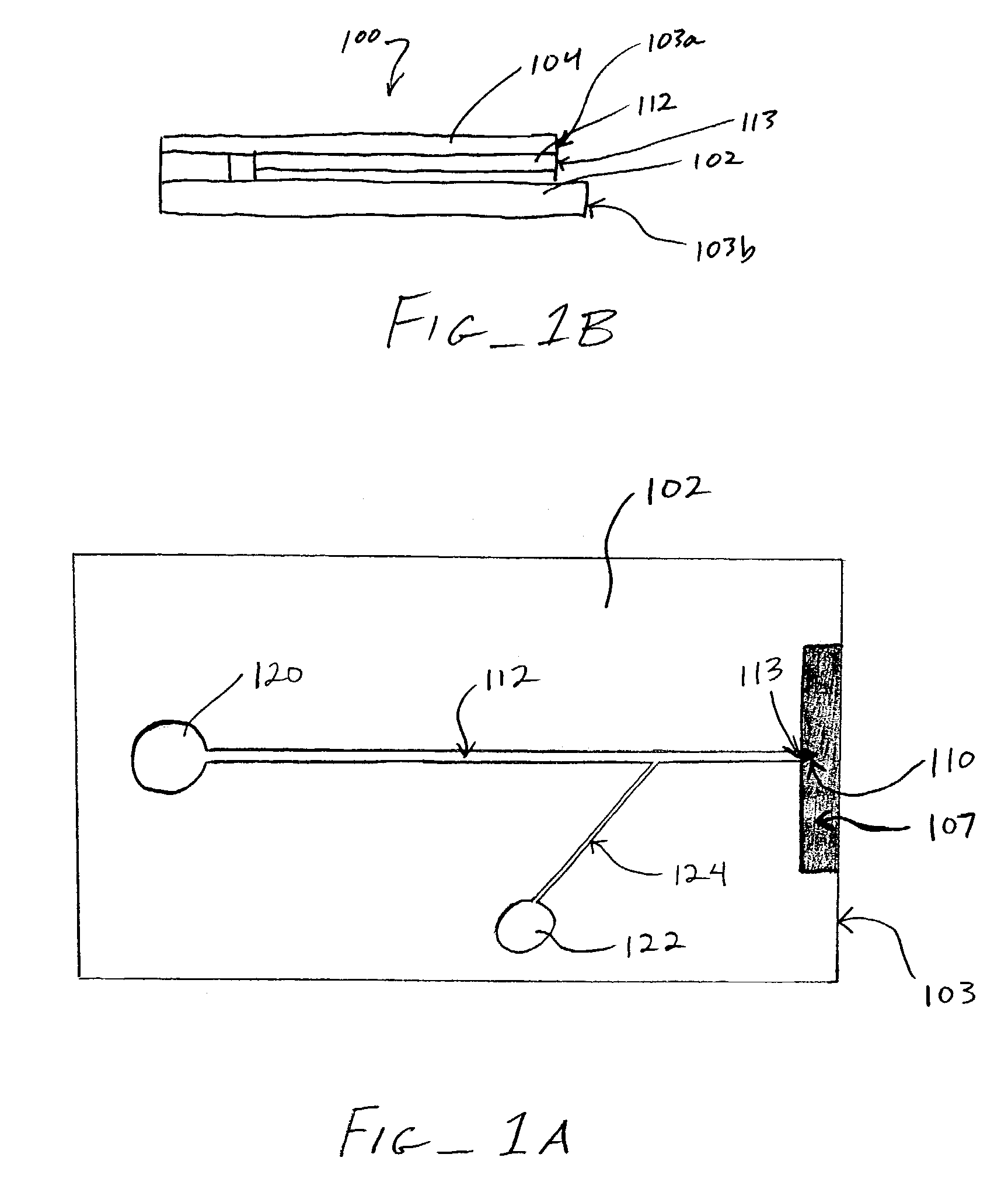Microfluidic devices and methods
a microfluidic and interface technology, applied in the field of microfluidic devices and mass spectrometers, can solve the problems of esi tips being both difficult to manufacture and easy to break or damage, and the microfluidic ms interface structure is difficult to manufacture, and achieves the effect of enhancing the delivery of substances
- Summary
- Abstract
- Description
- Claims
- Application Information
AI Technical Summary
Benefits of technology
Problems solved by technology
Method used
Image
Examples
Embodiment Construction
[0041]Improved microfluidic devices and methods for making and using such devices provide one or more substances to a mass spectrometer for analysis. The microfluidic devices generally include first and second surfaces, at least one microchannel formed by the surfaces, and an outlet at an edge of the surfaces which is recessed back from an adjacent portion of the edge. Some embodiments include one or more hydrophilic surfaces and / or hydrophobic surfaces to help guide substances out of the outlet to provide the substances to a mass spectrometer in a desired configuration, direction or the like. Hydrophilic surfaces may minimize or inhibit protein binding, which may also be beneficial, so that alternative surfaces which inhibit protein binding may also be employed in place of the hydrophilic surfaces described herein. Some embodiments include a protruding tip that is recessed from the adjacent edge of the surfaces. Such a tip may help guide the substances while remaining resistant to ...
PUM
| Property | Measurement | Unit |
|---|---|---|
| radius | aaaaa | aaaaa |
| diameter | aaaaa | aaaaa |
| diameter | aaaaa | aaaaa |
Abstract
Description
Claims
Application Information
 Login to View More
Login to View More - R&D
- Intellectual Property
- Life Sciences
- Materials
- Tech Scout
- Unparalleled Data Quality
- Higher Quality Content
- 60% Fewer Hallucinations
Browse by: Latest US Patents, China's latest patents, Technical Efficacy Thesaurus, Application Domain, Technology Topic, Popular Technical Reports.
© 2025 PatSnap. All rights reserved.Legal|Privacy policy|Modern Slavery Act Transparency Statement|Sitemap|About US| Contact US: help@patsnap.com



